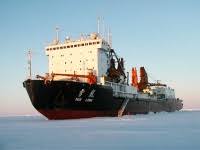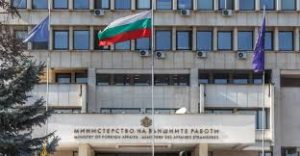LatAm expects stable, prosperous new year after turbulent 2019

Mexico City: The year of 2019 was a turbulent one for Latin America where there were protests, violent clashes and a fierce tug of war between conservative and progressive currents in countries long considered bastions of stability.
As the region staggers into 2020 with stagnant or even shrinking growth, hopes are that the first year of this new decade will be marked by greater political stability, economic prosperity and fruitful trade ties, though observers admit it may sometimes be an uphill battle, China Economic Net reported.
With tensions in the region expected to ease in the new year, Chile and Bolivia, the two most roiled by political upheaval in 2019, have already set the wheels in motion towards recovering stability.
Chileans will get to vote in an April 26 plebiscite on whether to rewrite the Constitution to better address economic and social disparities.
The plebiscite was proposed after massive protests broke out in mid-October against a hike in subway fares in the capital Santiago, and quickly spread throughout the country, fueled by anger at Chile’s inability to distribute the country’s wealth, which is leading to growing inequality.
It remains to be seen whether the April poll will satisfy Chilean protesters, but one good sign is that the plebiscite addresses what many experts believe is Latin America’s biggest concern — inequality.
It’s not enough to generate wealth, as events in Chile, which has emerged as a high-income country in recent years, have proven.
What is needed are policies that promote social and work place inclusion to help eradicate poverty and strengthen the middle class, the United Nations Economic Commission for Latin America and the Caribbean (ECLAC) recommends.
“We have a highly vulnerable middle class, and that is where we have to offer the right answers, especially to the youth,” Alicia Barcena, the ECLAC’s executive secretary, has said.
Bolivia is set to hold general elections in May for the second time in eight months, after the outcome of October elections was not recognized by the conservative opposition, leading to protests, the resignation of the country’s first indigenous president and the installation of an interim government.
Will new elections help pacify the polarized country? That all depends on the turnout, said Bolivian political scientist Marcelo Arequipa.
“Without a doubt, Bolivia’s political-electoral horizon seems uncertain, especially since the right insists on a fragmented roster of potential presidential candidates,” said Arequipa.
The problem that plagues the right, center-right and hard-right, he said, is the lack of consensus around a unifying candidate, which means those parties will be disputing 60 percent of the votes, while the remaining 40 percent will go to the ruling Movement Towards Socialism (MAS) party.
To win, a candidate must garner more than 50 percent of the vote, or more than 40 percent with a 10-point lead over the runner-up, otherwise a runoff will be held between the two leading candidates.
Economic deceleration was widespread and synchronized among Latin American countries and sectors, but several are seeing light at the end of the tunnel.
Brazil, the region’s largest economy, has been showing signs of recovery since the second half of last year, with many economic indicators presenting positive results.
On that news, the Brazilian government upgraded its 2020 economic growth forecast in mid-January from 2.32 percent to 2.4 percent.
According to a report by the Brazilian Economy Ministry’s Economic Policy Secretariat, economic indicators are coming in stronger than the market expected, especially in certain sectors, such as services, commerce and civil construction.
The region’s number two economy, Mexico, breathed a sigh of relief with the approval by the U.S. Senate of the United States-Mexico-Canada Agreement on free trade.
The deal still needs to be passed by Canada’s parliament before it can take effect, but it is already helping to lift spirits and confidence in Mexico’s economic outlook.
Affected mainly by global trade tensions and social turmoil at home, Chile’s exports fell 7.4 percent in 2019. But the government is looking to revert those losses this year by expanding both its range of export products and export markets.
“We are looking to diversify our presence in leading markets we are already in, such as China
and the United States, for example, by increasing our export of services,” said Rodrigo Yanez, Chile’s undersecretary for International Economic Relations, told reporters.
Much of the discontent in Ecuador, and other Latin American countries, springs from the 1972
-1982 oil boom, which resulted in high levels of corruption and rampant spending and burdened nations with huge debt and imbalanced economies to this day.
“The government has to make public finances sustainable again. That is going to help recover the country’s competitiveness,” economist Alberto Acosta Burneo said.
Protests in Ecuador are sparked by the elimination of fuel subsidies, which resulted in a sudden spike of gasoline prices and was estimated to save the government 1.5 billion U.S. dollars a year to start getting its finances in order.
In a report issued in December, the ECLAC said fiscal policies in the region should be centered “on the reactivation of growth and on responding to growing social demands.”
As an important trade and development partner for Latin America, China is playing a growing role in the region’s development, and offers more chances for the region to make continued progress on different fronts, regional observers agreed.
With shared interests in development and highly complementary economies, cooperation between China and Latin American countries has enjoyed sound momentum of growth despite the region’s instability and weak economy.





